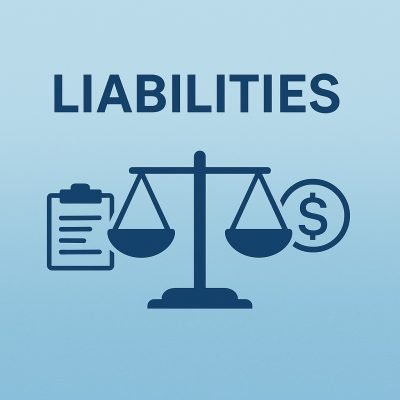Understanding Different Categories of Liabilities

Liabilities are an integral part of any business’s financial landscape. They represent obligations or debts that a company owes to others, whether it’s a lender, supplier, or other entity. Effectively managing liabilities is key to maintaining financial health and ensuring long-term growth. This article will break down the different categories of liabilities to help you better understand their role in your business’s finances.
1. Current Liabilities
Current liabilities are obligations that a business expects to settle within one year or its operating cycle, whichever is longer. These short-term liabilities are typically tied to the company’s day-to-day operations and require careful management to ensure sufficient liquidity.
Examples of Current Liabilities:
-
Accounts Payable: Money owed to suppliers for goods or services purchased on credit.
-
Short-Term Loans: Loans or credit lines due within a year.
-
Accrued Expenses: Expenses that have been incurred but not yet paid, such as salaries or utilities.
-
Taxes Payable: Taxes owed to the government that are due within the current period.
Importance of Managing Current Liabilities: Efficient management of current liabilities ensures that a business can meet its obligations without disrupting cash flow or operations. Prioritize timely payments to avoid penalties or strained relationships with suppliers.
2. Non-Current Liabilities
Non-current liabilities are obligations that extend beyond one year. These long-term liabilities are often associated with significant investments or financing arrangements that support the business’s growth and expansion.
Examples of Non-Current Liabilities:
-
Long-Term Loans: Loans with repayment schedules that exceed one year, such as mortgages or business loans.
-
Bonds Payable: Debt securities issued by the company to raise capital.
-
Lease Obligations: Long-term lease agreements for property or equipment.
-
Deferred Tax Liabilities: Taxes owed due to timing differences between accounting income and taxable income.
Strategic Considerations: Non-current liabilities often require careful planning and budgeting to ensure the business can meet its long-term financial commitments without jeopardizing its stability.
Tips for Managing Liabilities Effectively
-
Prioritize Payments: Always pay off high-interest debts first to reduce financial strain.
-
Monitor Ratios: Keep an eye on metrics like the current ratio and debt-to-equity ratio to assess financial health.
-
Plan Ahead: Use cash flow forecasts to ensure you can meet both short-term and long-term obligations.
-
Communicate: Maintain good relationships with creditors and negotiate terms when necessary.
Understanding the different categories of liabilities and their implications helps you make informed decisions to safeguard your business’s financial health. Whether managing current obligations or planning for long-term growth, a proactive approach to liability management is essential for success.
Do you need help categorizing your current and long term liabilities? Contact us by clicking on the button below to learn how we can help.